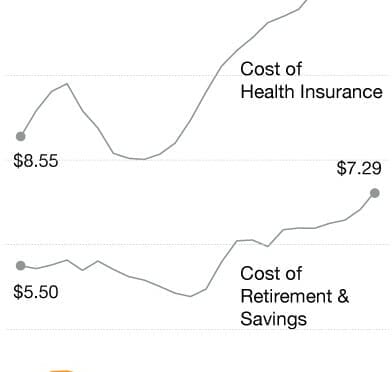The Department of Labor & Industries (DLI) has responded to COVID-19 FAQs from employers. In a news statement, below, DLI outlines policy decisions made to provide direction and relief for state fund employers under the workers’ compensation system.
The referenced COVID-19 FAQs are, primarily, related to employers who participate in the Retrospective Rating, or RETRO, program. This is a complex system based on a simple premise. Retro employers pay premiums into the workers’ compensation fund each year, but are then audited to determine actual claim costs. If their costs are higher than premiums paid, then an additional payment for the difference must be made. Or, if the claim costs are lower than the premiums paid, they receive a refund of a portion of their premium payments.
This program is intended to incentivize safer workplaces. The claim costs from allowed Coronavirus cases could prove quite harmful to many employers. The policy updates from DLI address this concern.
DLI Notice of COVID-19 Policy Decisions
In response to questions from employers and their representatives, the Department of Labor & Industries has made certain policy decisions to provide some financial relief to state fund employers from the impact of allowed COVID-19 claims. These decisions are outlined in the “Frequently Asked Questions” (FAQ) below. We also want you to be aware of premium reporting requirements under certain circumstances such as when a business has been closed as a result of the pandemic, yet the employer is continuing to pay their workers. And we’ve clarified that injured workers whose temporary light duty ends are entitled to time-loss compensation. If you have any questions please contact your account manager or retrospective rating representative.
Common COVID-19 FAQs from Employers
Will coronavirus (COVID-19) claims impact an employer’s experience modification factor and claim-free discount (if applicable)?
No. All losses for allowed coronavirus claims, regardless of whether the virus is contracted, will not be included in the determination of an employer’s experience modification factor. An employer will not lose their claim free discount as a result of an allowed coronavirus claim.
What will the impact to retrospective rating calculations be for losses from coronavirus claims?
It’s important that the claims included in experience factor calculation, retrospective rating adjustments, and for rating purposes align. Therefore, the losses for allowed coronavirus claims will not be included in the retro adjustment calculations.
If an employer has a worker on temporary light duty and their business is closed due to the pandemic, is the worker eligible for time-loss benefits? Will these losses be included in the employer’s experience factor?
The worker is eligible for time-loss benefits unless the employer chooses to keep them on salary. The law is clear in situations where temporary or transitional light-duty work comes to an end, regardless of the reason it’s ending. The law recognizes that these workers are restricted from being able to perform their regular employment or jobs, other than the light-duty one.
Only losses for allowed coronavirus claims are being removed from the experience factor calculations.
Does an employer need to report hours when their business is closed during the pandemic, or when a worker is continuing to be paid or kept on salary but notactually working?
If an employer continues to pay a worker while their business is closed during a coronavirus quarantine, or to maintain the worker’s salary on an open claim, if the worker is not actually working the hours don’t need to be reported.
- If you have hourly workers who are continuing to be paid and not working as a result of the pandemic, you are not required to report hours and premium for the time they are not working.
- If you have salaried workers reporting actual hours worked (hourly method), continue to do so.
- If you have salaried workers and report 480 hours per quarter (salary method), you may report the actual hours they worked.
Note: regardless of how you report, you are required to keep a record of these non-work hours in your payroll system. Please refer to WAC 296-17-35201 for recordkeeping and retention.
Contact Information for RETRO Employers
If you have further questions regarding reporting, contact your account manager at 360-902-4817.
Retrospective Rating Program
WA State Department of Labor & Industries
PO Box 44180
Olympia, Washington US 98504-4180
Retro@Lni.wa.gov
360-902-4851 voice
360-902-4258 fax





